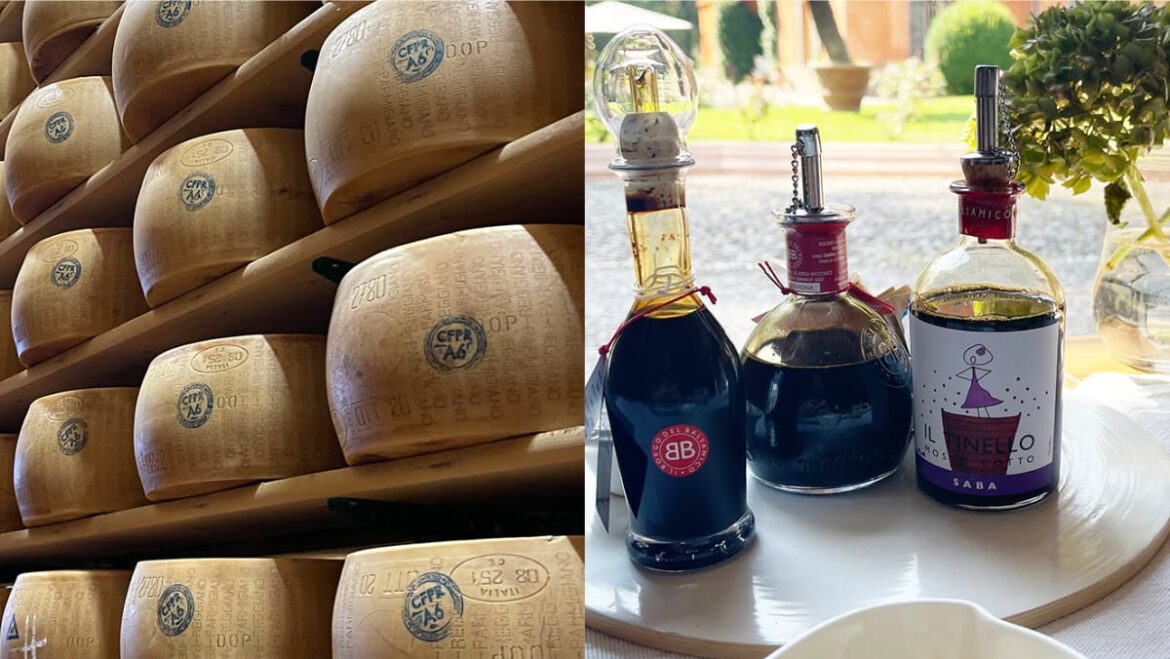COMPLEMENTARY CONDIMENTS
Another ingredient even more associated with Modena is Balsamico, balsamic vinegar which again has to be produced within a specific geographic region, this time the provinces of Modena and Reggio Emilia.
A combination of climate, terroir and grapes with just the right balance of sugar and acidity combine to allow producers to follow a process which dates back to Roman times.
The name “balsamic” for vinegar dates back to the mid-18th century and derives from the word “balm” or “balsamum” in Latin, referring to a usually aromatic substance which soothes or heals. But many centuries prior, balsamic vinegar was already being drunk, to counteract everything from coughs to the plague.
It was around 1750 when wealthy families in Emilia-Romagna started to craft their own vinegars for their own consumption, ageing them in wooden barrels. At weddings or births, new barrels would be dedicated before passing them down through generations, a symbolic and slow process.
Today, authentic Aceto Balsamico Tradizionale – there are countless cheap, industrially produced imitators – has to be certified by the balsamic consortiums of either Modena or Reggio Emilia. They need to have been produced in one of these provinces using only traditional and artisanal methods, while additives are strictly forbidden.
One producer with a peerless reputation comes at a breath-taking estate with a storied history, Il Borgo del Balsamico. Through wrought iron gates and past a fragrant rose garden, a beautiful terracotta coloured main house dates from the end of the 18th century and an elegant villa from the turn of the 19th. Together they form an idyllic Italian retreat, which is also a unique place to stay for a handful of lucky guests – especially those who get to visit a very special attic room where balsamico is crafted.

